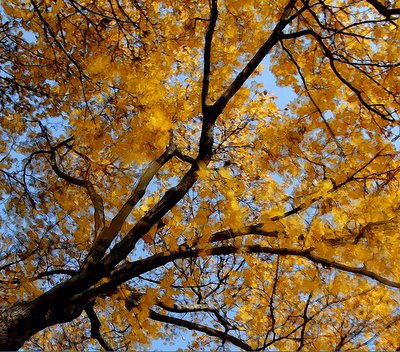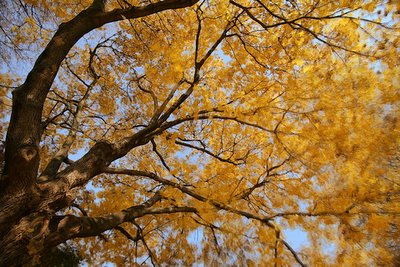Back Again..with stacking images
This fall I took a lot of tripod based shots of my maple tree, as it was in it's bright yellow bushy stage, and losing leaves. It was windy, and so I thought it would be nice to capture the leaves rustling and falling.
Tonight I combined about 8 of these images as an experiment, using the tutorial at: Image Stacking.
Here's the finished result, where I've cropped so as to to allow maximum viewing of the "impressionistic texture" gained by the stacking:

But the full size version isn't bad either. Here's the full frame, again, finished by sharpening and then softening:





1 Comments:
Neil,
That's a very interesting method of stacking images, quite different than the methods I've used so far.
In reality it doesn't stack the whole image, but portions of it, which would explain why it looks so clear even after 8 images.
The result is really beautiful. It gives a very good sense of motion. It keeps the overall feel of the original photos much better. It also looks less dreamy in a way. I like the result very much.
I'll try the technique this evening.
Yeah!
Post a Comment
<< Home